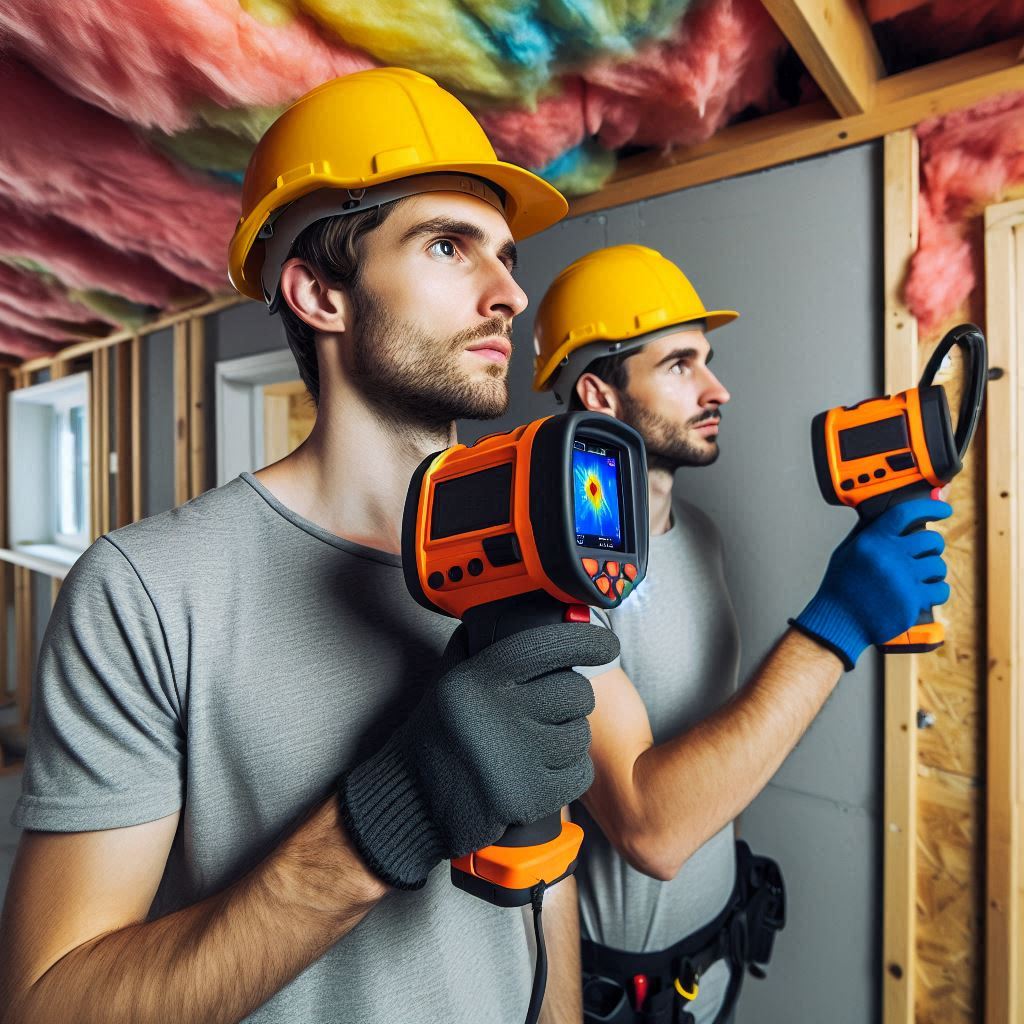Unveiling hidden truths, harnessing the power of infrared technology in home inspections.
Infrared technology has revolutionized the field of home inspections, providing inspectors with a powerful tool to identify issues that may be invisible to the naked eye. By detecting and visualizing thermal energy emitted from various objects, infrared cameras enable inspectors to locate hidden problems such as water leaks, insulation deficiencies, electrical faults, and pest infestations. This introduction will explore the numerous advantages of using infrared technology in home inspections and highlight its role in ensuring safe and efficient living environments for homeowners.
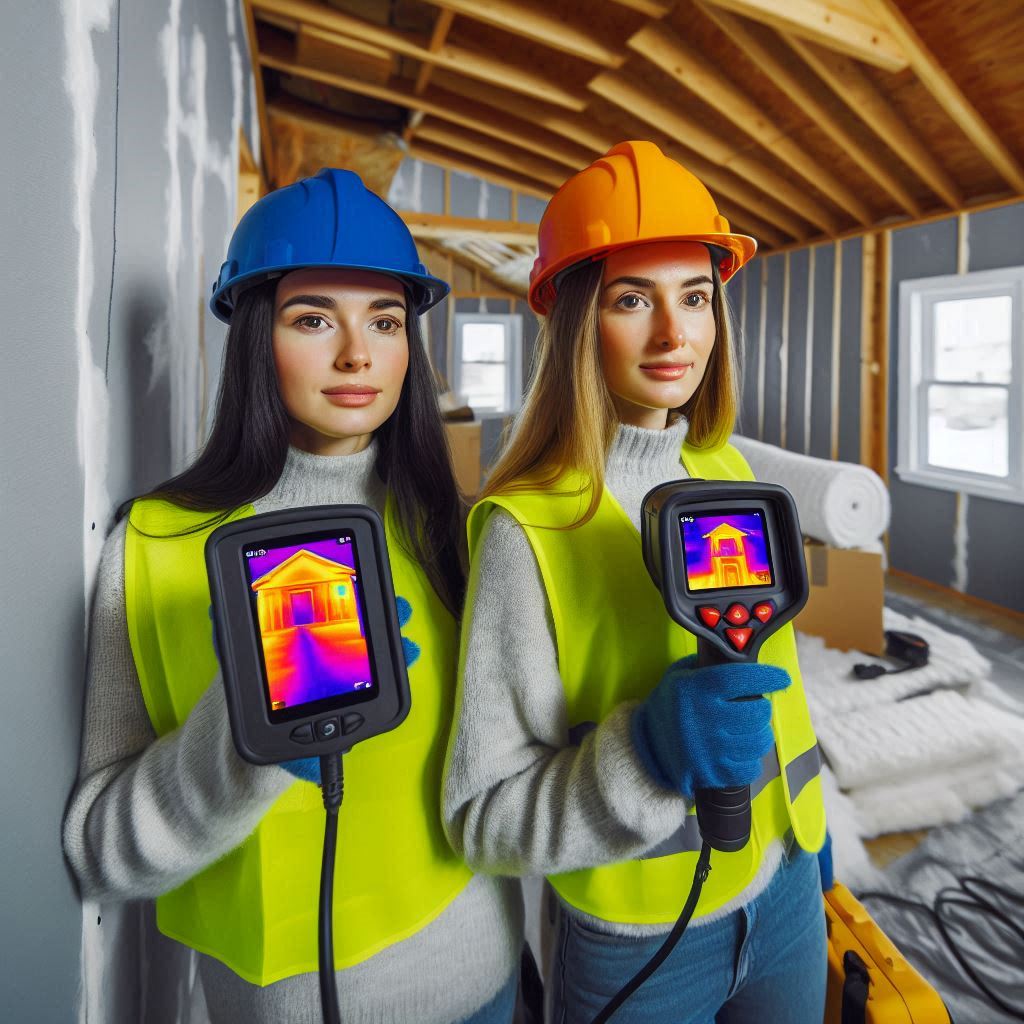
Benefits of Infrared Technology in Home Inspections
The use of infrared technology in home inspections has revolutionized the way we assess and analyze properties. With its ability to detect heat signatures, this advanced tool provides invaluable information that goes beyond what the naked eye can see. Infrared technology offers numerous benefits when it comes to conducting thorough home inspections.
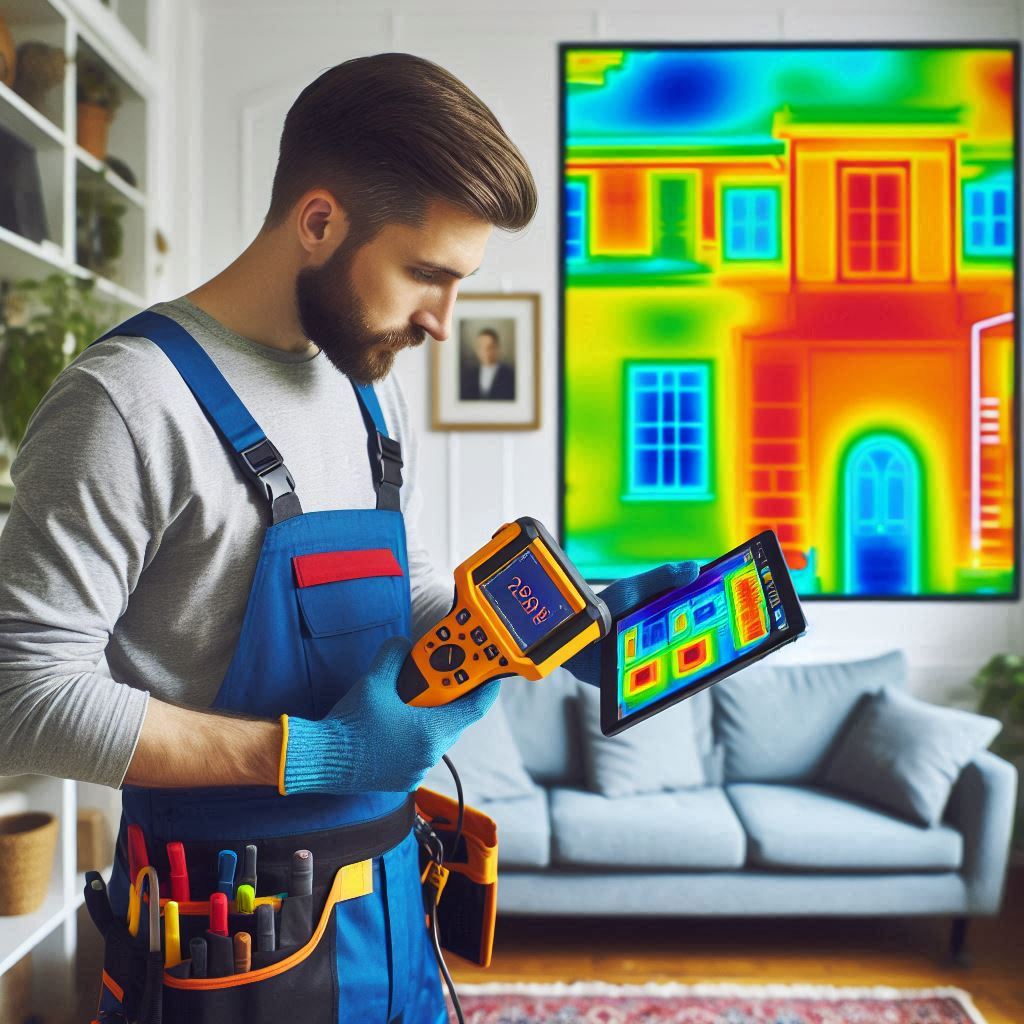
One of the key advantages of using infrared technology is its ability to uncover hidden issues within a property. Traditional visual inspections may not reveal problems such as leaks or electrical faults concealed beneath surfaces, but infrared scans can identify these potential hazards. By detecting differences in temperature, infrared cameras can highlight areas where insulation is lacking or where moisture is present, enabling inspectors to address these concerns promptly.
In addition to identifying hidden issues, another benefit of utilizing infrared technology in home inspections is its non-destructive nature. This means that inspectors can obtain valuable information without causing any damage to the property itself. Unlike invasive techniques like drilling holes or tearing down walls for investigation purposes, which are both costly and time-consuming, infrared scans allow for quick and efficient evaluation while preserving the integrity of the structure being examined.
Furthermore, using infrared technology enhances accuracy and precision during home inspections. With thermal imaging capabilities, this tool provides detailed visual representations of heat patterns emitted by various components within a property. By analyzing these images alongside corresponding temperature data, inspectors gain comprehensive insights into potential problem areas with high accuracy rates. This enables them to make informed decisions regarding repairs or necessary maintenance actions.
Another advantage offered by infrared technology lies in its ability to save time during inspections. Traditional methods often require significant physical efforts as inspectors manually search for signs of anomalies or damages throughout a property. However, with an effective use of thermal imaging devices combined with skilled operators trained in interpreting results accurately – inspection times are significantly reduced.
Moreover, employing an innovative tool like an infrared camera also leads to cost savings for homeowners and buyers alike due to early detection capabilities enabled through this advanced technology platform – detecting problems before they escalate into major repairs or safety hazards can save considerable amounts of money in the long run.
Infrared technology is not limited to detecting only structural issues. It also plays a crucial role in energy efficiency assessments. By identifying areas of heat loss or air leakage, infrared scans provide valuable data that helps homeowners optimize their insulation and reduce energy waste. This contributes not only to lower utility bills but also to a more sustainable environment.
In conclusion, the use of infrared technology has greatly enhanced home inspections by providing an extensive range of benefits. From uncovering hidden issues and avoiding destructive investigation methods to improving accuracy and saving time, this tool has become indispensable for inspectors and homeowners alike. With its ability to detect problems early on and promote energy efficiency, it is clear that infrared technology has truly transformed the way we assess properties – making homes safer, more cost-effective, and environmentally friendly in the process.
How Infrared Cameras Detect Hidden Issues in Homes
Infrared technology has become an essential tool in home inspections, allowing inspectors to detect hidden issues that may not be visible to the naked eye. With the use of infrared cameras, inspectors can identify problems such as water leaks, electrical hotspots, and insulation deficiencies.
One of the primary advantages of using infrared cameras is their ability to detect water leaks. Water damage is a common problem in homes and can lead to structural damage if left unaddressed. Traditional inspection methods may not always be able to pinpoint the exact location of a leak or its extent. However, infrared cameras can detect temperature differences caused by moisture intrusion behind walls or ceilings, allowing inspectors to identify potential water damage accurately.
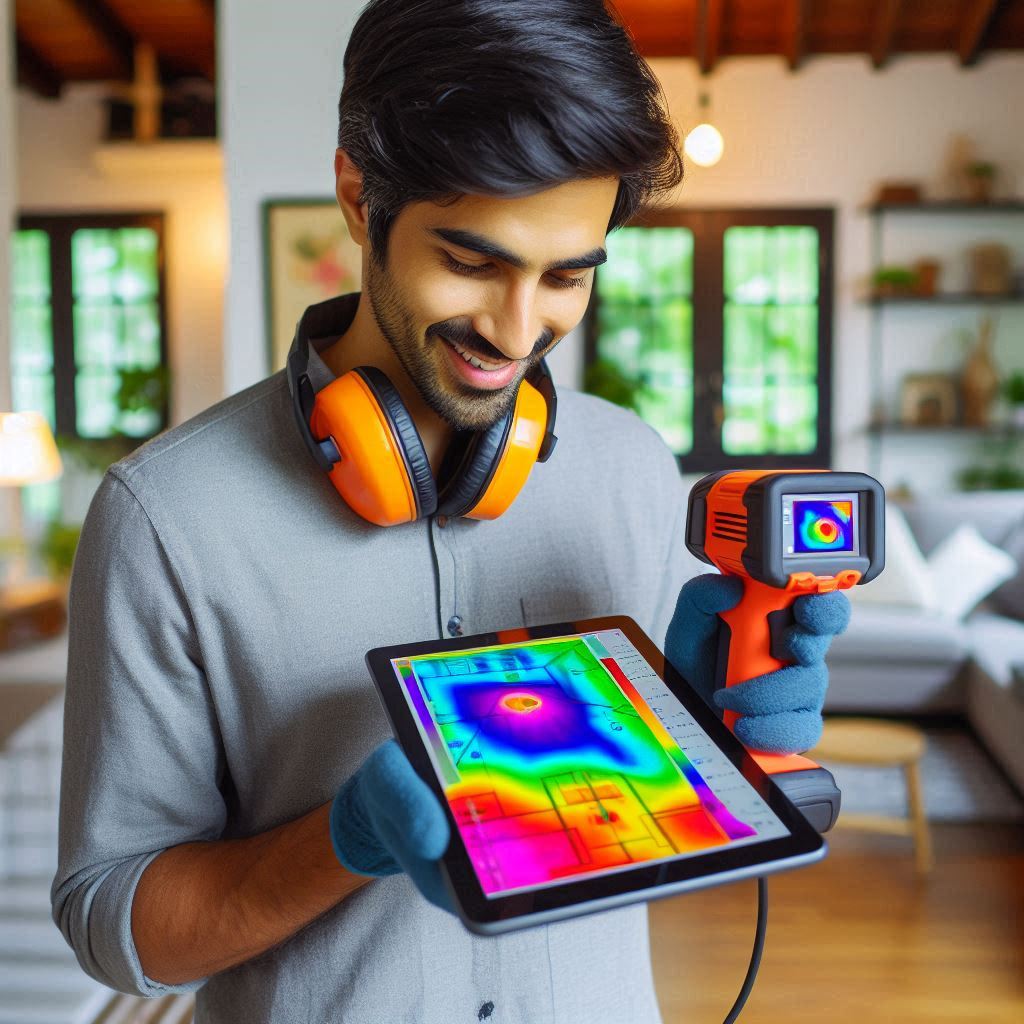
Another area where infrared technology proves valuable is in detecting electrical hotspots. Faulty wiring or overloaded circuits can result in dangerous situations such as fires. Infrared cameras allow inspectors to identify areas where excessive heat is being generated due to electrical issues. By identifying these hotspots early on, homeowners can take necessary actions like rewiring or upgrading circuits before a potentially hazardous situation arises.
Insulation deficiencies are yet another problem that can go unnoticed during traditional inspections but are easily detected with the help of infrared technology. Poor insulation leads to energy loss and higher utility bills for homeowners. Infrared cameras enable inspectors to spot areas with inadequate insulation by detecting temperature variations along walls and windowsills that indicate air leakage or poor installation.
The process involved in using infrared technology for home inspections begins with conducting a comprehensive visual examination of the property’s exterior and interior areas using traditional methods. Once this initial assessment is complete, an inspector will then utilize an infrared camera for further investigation into any suspicious findings from earlier observations.
During this step, it’s important for inspectors to understand how thermal imaging works so they can interpret what they see on-screen correctly. Infrared radiation emitted by objects varies depending on their surface temperature: warmer objects emit more radiation than cooler ones. The camera detects this radiation and converts it into a visual image called a thermogram. This allows inspectors to identify areas with abnormal heat patterns that may indicate hidden issues.
When reviewing the results obtained from infrared cameras, it’s crucial for inspectors to differentiate between normal variations in temperature and anomalies caused by underlying problems. Thermal images can sometimes be misleading if not interpreted correctly, so experience and expertise are essential in making accurate assessments.
In conclusion, the power of infrared technology in home inspections cannot be overstated. By using infrared cameras, inspectors can effectively detect hidden issues like water leaks, electrical hotspots, and insulation deficiencies that might go unnoticed during traditional inspections. With this knowledge at their disposal, homeowners can make informed decisions about necessary repairs or upgrades before problems escalate into costly repairs or compromise safety. Ultimately, investing in an infrared inspection offers peace of mind by ensuring that potential issues are identified early on and addressed promptly.
Understanding the Science Behind Infrared Imaging
Infrared technology has revolutionized many fields, and one area where it has made a significant impact is in home inspections. By utilizing infrared imaging, inspectors are able to identify potential issues within a home that may not be visible to the naked eye. Understanding the science behind this technology can help homeowners and inspectors alike appreciate its power and effectiveness.
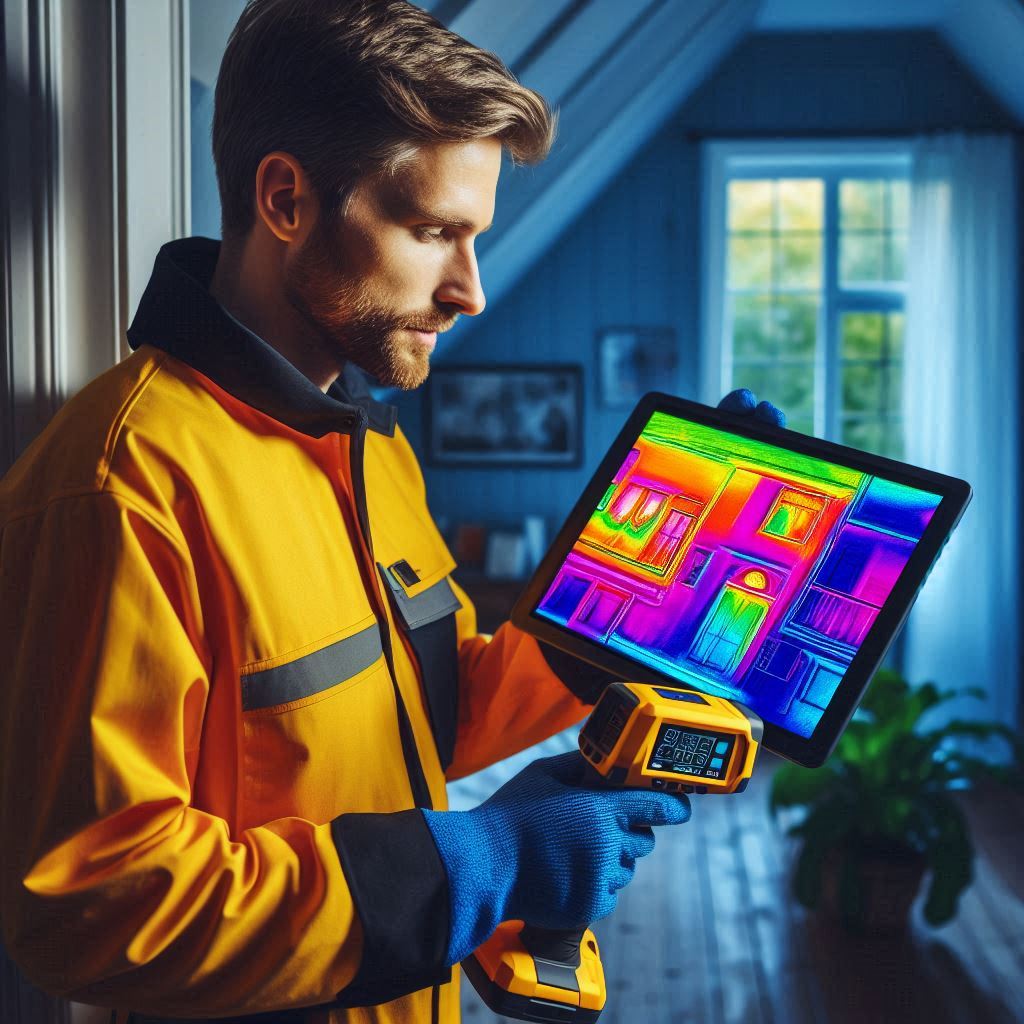
Infrared imaging works by capturing and measuring the heat emitted from an object or surface. Every object emits a certain amount of thermal energy based on its temperature, and this energy is detected by an infrared camera. The camera then converts this data into a visual image, allowing inspectors to see variations in temperature throughout a home.
One key aspect of understanding infrared technology is knowing that it operates within the electromagnetic spectrum. This spectrum includes all types of electromagnetic radiation, ranging from radio waves at one end to gamma rays at the other. Infrared radiation falls just below visible light on this spectrum, making it invisible to human eyes but detectable through specialized equipment.
By detecting differences in temperature, infrared imaging can reveal areas of concern that may indicate underlying issues within a home. For example, cold spots on walls or ceilings could suggest insulation problems or hidden moisture intrusion. Conversely, hot spots could indicate electrical issues such as overloaded circuits or faulty wiring.
The ability to detect these thermal anomalies gives home inspectors valuable insights into potential problems before they become major issues for homeowners. By identifying these concerns early on, homeowners can take proactive measures to address them before they escalate into costly repairs or safety hazards.
When conducting an infrared inspection, it is crucial for inspectors to have a solid understanding of heat transfer principles. Heat transfer occurs through three main mechanisms: conduction, convection, and radiation. Conduction refers to the transfer of heat through direct contact between objects; convection involves heat being carried away by air currents; while radiation pertains to the emission and absorption of thermal energy.
By comprehending these principles, inspectors can accurately interpret infrared images and discern whether a temperature variation is due to a genuine problem or simply an expected heat transfer process. This level of expertise ensures that inspectors provide homeowners with accurate assessments and actionable recommendations.
In addition to providing insights into potential issues within a home, infrared imaging can also be utilized for preventive maintenance purposes. By regularly inspecting critical systems like electrical panels or HVAC units, homeowners can identify any abnormal temperature patterns that may indicate impending failures. Taking proactive measures based on this information can help extend the lifespan of equipment and minimize downtime or costly emergency repairs.
In conclusion, understanding the science behind infrared technology is crucial in recognizing its power in home inspections. Infrared imaging allows inspectors to visualize temperature variations throughout a home, uncovering hidden issues that may not be visible to the naked eye. By having knowledge of heat transfer principles and interpreting thermal anomalies accurately, inspectors provide invaluable information for homeowners to address concerns before they become significant problems. Furthermore, utilizing this technology for preventive maintenance enables homeowners to proactively protect their investments by identifying potential system failures ahead of time. With its ability to reveal hidden truths about homes’ conditions, infrared technology has undoubtedly become an indispensable tool in the world of home inspections.
Key Applications of Infrared Technology in Home Inspections
The use of infrared technology in home inspections has become increasingly popular in recent years. This powerful tool allows inspectors to identify potential issues that may not be visible to the naked eye. Infrared technology works by detecting and measuring the heat emitted by objects, enabling inspectors to detect temperature variations and anomalies within a structure.
One key application of infrared technology in home inspections is the detection of water leaks. Water damage can be one of the most costly problems homeowners face, as it can lead to structural damage, mold growth, and other health hazards. Traditional methods of detecting water leaks often involve invasive procedures such as tearing down walls or ceilings. However, with infrared technology, inspectors can quickly identify areas where there may be moisture present without causing any unnecessary damage.
Another important application of infrared technology is the identification of energy inefficiencies within a home. Poor insulation or air leakage can significantly impact a home’s energy consumption and comfort levels. By using an infrared camera during an inspection, inspectors are able to pinpoint areas where insulation may be lacking or where air infiltration is occurring. This information allows homeowners to make informed decisions about necessary repairs or improvements that will ultimately reduce their energy costs.
Electrical issues are also commonly detected using infrared technology during home inspections. Overloaded circuits or faulty wiring pose significant safety risks and can result in electrical fires if left unaddressed. Infrared cameras allow inspectors to visualize temperature differences along electrical components, indicating potential issues such as loose connections or overloaded circuits before they become dangerous problems.
In addition to these applications, thermal imaging cameras have proven useful for identifying hidden pests such as rodents or termites within a property. Infestations from these creatures often go unnoticed until significant damage has already been done. With an infrared camera, however, inspectors are able to detect heat signatures associated with pest activity behind walls or beneath floorboards.
Furthermore, the use of thermal imaging cameras has extended beyond just identifying physical defects; it has been utilized for inspecting the performance of heating, ventilation, and air conditioning (HVAC) systems. By capturing temperature differences within HVAC units or ductwork, inspectors can assess whether these systems are functioning optimally or if there are any potential issues that may need attention.
Overall, infrared technology has revolutionized the field of home inspections by providing inspectors with a non-invasive method to identify various issues that would have otherwise gone undetected. The ability to detect water leaks, energy inefficiencies, electrical problems, pest infestations, and HVAC system performance all contribute to a more comprehensive inspection process.
Homeowners who invest in an infrared inspection can rest assured knowing that their property has been thoroughly evaluated for potential issues. Armed with this knowledge, homeowners are empowered to make informed decisions about necessary repairs or improvements that will enhance the safety, efficiency, and value of their homes.
In conclusion, the power of infrared technology in home inspections cannot be overstated. Its key applications in detecting water leaks, identifying energy inefficiencies and electrical problems, as well as locating hidden pests and evaluating HVAC system performance provide invaluable insights for homeowners. This innovative tool has undoubtedly become an essential component of modern home inspections worldwide.
Common Problems Detected by Infrared Scans in Houses
Infrared technology has revolutionized the field of home inspections, allowing for a more comprehensive and accurate assessment of potential issues in houses. This non-invasive technique detects thermal patterns and variations within the building structure, highlighting common problems that may otherwise go unnoticed. By utilizing infrared scans, home inspectors can identify hidden issues early on, helping homeowners save time and money on costly repairs down the line.
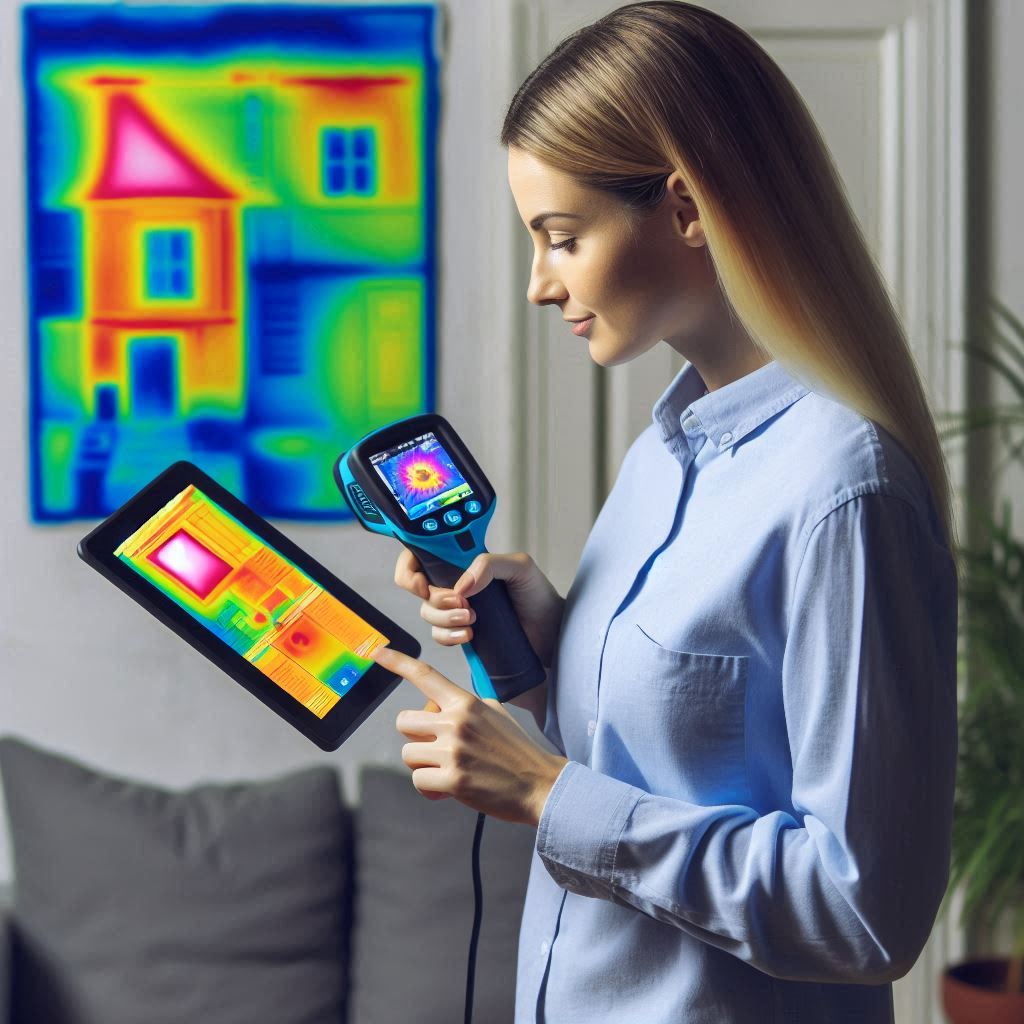
One of the most common problems detected by infrared scans is insulation deficiencies. Inadequate or damaged insulation can result in significant heat loss during colder months and excessive heat gain during hotter months. These temperature differences are easily detected by an infrared camera, as they manifest as cold or hot spots on walls or ceilings. Identifying insulation deficiencies allows homeowners to address them promptly, improving energy efficiency and reducing utility costs.
Moisture intrusion is another issue commonly identified through infrared scans. Water leaks within walls or roofs can lead to structural damage over time if not addressed properly. The presence of moisture creates a noticeable temperature difference that an infrared camera can pick up instantly. By pinpointing areas with higher levels of moisture accumulation, inspectors can guide homeowners toward appropriate solutions such as roof repairs or sealing cracks in the foundation.
Electrical problems also frequently reveal themselves through thermal imaging technology. Loose connections, overloaded circuits, faulty breakers – all these electrical issues generate excess heat that shows up clearly on an infrared scan. Detecting these problematic areas helps prevent potential fire hazards and electrical failures while enabling prompt repairs or upgrades to ensure safety within the house.
Another problem often identified using this technology is plumbing leaks concealed behind walls or under floors. Undetected leaks have detrimental effects on both property value and indoor air quality due to mold growth caused by prolonged exposure to moisture. With an infrared scan, inspectors locate water intrusion points quickly without having to resort to invasive measures like drilling holes into drywalls.
Moreover, poor HVAC system performance can be assessed effectively through thermal imaging cameras during home inspections. By identifying temperature variations in the system, inspectors can determine if there are blockages or leaks in the ductwork, improper insulation around vents, or malfunctioning components that compromise overall efficiency. Addressing these issues promptly not only improves comfort levels within the house but also lowers energy consumption and reduces utility bills.
Lastly, infrared scans are useful for detecting pest infestations such as termites or rodents. These unwanted guests often make their homes within wall voids or crawl spaces where they may go undetected for extended periods. However, their presence leaves behind telltale signs visible through thermal imaging due to heat generated by their activities. Identifying these infestations early on helps prevent further damage to structures and enables homeowners to take appropriate measures for extermination.
In conclusion, infrared technology has proven its power in detecting common problems during home inspections with remarkable accuracy and speed. From insulation deficiencies to moisture intrusion, electrical faults to plumbing leaks, HVAC system performance evaluation to pest infestation detection – infrared scans offer invaluable insights into a property’s condition without invasive methods while helping homeowners save time and money on repairs in the long run. Incorporating this advanced technique into home inspections ensures a more comprehensive assessment of potential issues and contributes significantly to maintaining healthy living environments for occupants
Enhancing Home Safety with Infrared Inspections
In the realm of home inspections, infrared technology has emerged as a powerful tool that can greatly enhance the safety and well-being of homeowners. By utilizing thermal imaging cameras, inspectors are able to identify potential issues within a home that may otherwise go unnoticed. This technology allows for the detection of hidden problems such as moisture intrusion, electrical issues, and energy inefficiencies.
One significant benefit of infrared inspections is their ability to detect moisture intrusion. Water damage can have devastating effects on a home if left untreated, leading to mold growth and structural deterioration. Traditional visual inspections often fall short when it comes to identifying hidden water sources behind walls or under flooring. However, by using an infrared camera, inspectors can easily identify areas where moisture is present based on temperature variations. This enables them to pinpoint the source of leaks or condensation and provide recommendations for remediation before more extensive damage occurs.
Furthermore, infrared inspections also play a crucial role in detecting electrical issues within homes. Faulty wiring or overloaded circuits pose serious risks such as electrocution or fire hazards. These issues are not always evident during standard visual inspections but can be identified through thermal imaging techniques used in infrared inspections. By scanning electrical systems with an infrared camera, inspectors can detect abnormal heat patterns indicative of loose connections or excessive resistance that may lead to dangerous situations if left unaddressed.
In addition to uncovering potential safety hazards like water damage and electrical issues, infrared technology also helps improve energy efficiency within homes. Energy inefficiencies can result in substantial monetary losses due to increased utility bills over time. Traditional methods of identifying these inefficiencies often involve invasive procedures or guesswork based on subjective observations made by homeowners themselves.
However, thermal imaging offers a non-invasive solution for evaluating energy performance by highlighting areas where insulation is lacking or HVAC systems are inefficiently operating through variations in temperature patterns displayed on the camera screen. This allows homeowners to make targeted improvements that can significantly reduce energy consumption, leading to cost savings and a more environmentally friendly household.
It is worth noting that while infrared inspections provide valuable insights into potential problems within a home, they are not meant to replace traditional visual inspections entirely. Instead, these two methods complement each other, forming a comprehensive approach to assessing the safety and condition of homes.
In conclusion, the power of infrared technology in home inspections cannot be overstated. With its ability to detect hidden issues such as moisture intrusion, electrical faults, and energy inefficiencies, this technology greatly enhances home safety by enabling early detection and prevention of potentially hazardous situations. By incorporating thermal imaging cameras into their inspection process, professionals can offer homeowners peace of mind knowing that their dwelling has been thoroughly evaluated for any potential risks or shortcomings. The marriage of traditional visual inspections with infrared technology ensures a holistic approach towards creating safer and more efficient homes for individuals and families alike.
Cost-effectiveness of Using Infrared Technology for Home Assessments
In the realm of home inspections, technology has become an increasingly powerful tool in ensuring accuracy and efficiency. One such technology that has gained prominence is infrared (IR) technology. IR cameras have revolutionized the way home inspectors assess properties by providing them with detailed information about potential issues that may not be visible to the naked eye.
One of the key advantages of using infrared technology for home assessments is its cost-effectiveness. Traditionally, identifying problems within a property required invasive methods like opening walls or ceilings to inspect for hidden defects. These methods not only caused damage but also increased the overall costs of inspections. However, with IR cameras, inspectors can identify problems non-invasively, reducing both time and costs associated with repairs.
For instance, leak detection is a common issue faced by homeowners. Identifying leaks traditionally involved visually inspecting pipes or conducting pressure tests that were time-consuming and often inconclusive. With IR cameras, however, inspectors can detect leaks by capturing temperature differences caused by water intrusion behind walls or under flooring without causing any damage to the structure itself.
Moreover, using IR cameras eliminates guesswork during assessments as they provide objective data regarding insulation efficiency within a property. Poor insulation can lead to energy inefficiency and increased utility bills for homeowners. Traditional inspection methods relied on visual cues like drafts or moisture stains which were subjective and sometimes misleading indicators of insulation issues. By utilizing infrared technology during inspections, inspectors are able to accurately pinpoint areas where heat loss occurs in a house through thermal imaging techniques.
Furthermore, electrical faults pose significant risks in homes but are not always evident upon visual inspection alone. Electrical issues such as loose connections or overloaded circuits could potentially cause fires if left undetected and unaddressed. Infrared imaging allows inspectors to easily identify hot spots within electrical panels indicating potential hazards before they escalate into dangerous situations.
Additionally, pests like rodents can cause considerable damage to homes if their presence goes unnoticed over an extended period of time. Inspecting for pests traditionally involved tedious and often ineffective methods like setting traps or visually searching for signs of infestation. However, with IR cameras, inspectors can quickly identify areas where pests may be present by detecting heat signatures caused by their nesting or burrowing activities.
In conclusion, infrared technology has proven to be a game-changer in the realm of home inspections due to its cost-effectiveness. By allowing non-invasive assessment methods, infrared cameras not only reduce time and expenses associated with repairs but also provide objective data that enhances accuracy in identifying various issues within properties. From leak detection to insulation efficiency assessments and even electrical fault identification, IR cameras have proven invaluable tools in ensuring thorough home inspections. As technology continues to evolve and advance, it is safe to say that the power of infrared technology will continue to play a crucial role in maintaining the safety and integrity of homes around the world.
Exploring the Role of Infrared Technology in Energy Efficiency Assessments
The use of infrared technology in home inspections has become increasingly popular in recent years, particularly when it comes to assessing the energy efficiency of a property. Infrared technology, also known as thermal imaging, allows inspectors to detect and visualize temperature differences in a building. This technology can provide valuable insights into areas where there may be heat loss or air leakage, ultimately helping homeowners identify potential energy efficiency improvements.
One of the primary benefits of using infrared technology in energy efficiency assessments is its ability to reveal hidden issues that may not be visible with the naked eye. Traditional visual inspections often overlook problem areas such as insulation gaps, improperly sealed windows and doors, or hidden leaks behind walls. However, thermal imaging cameras can detect these anomalies by capturing images that display variations in temperature across different surfaces.
When conducting an energy efficiency assessment using infrared technology, inspectors typically scan the entire house both internally and externally. The camera captures infrared radiation emitted by objects and converts it into an image called a thermogram. These thermograms highlight temperature differences within the building’s structure and are presented as color-coded images where cooler areas appear blue or green while warmer areas show up as red or yellow.
By analyzing these thermograms obtained through thermal imaging, inspectors can pinpoint specific locations where heat loss occurs. For example, they might identify cold spots around windows due to inadequate insulation or leaking air from poorly sealed frames. Similarly, hot spots on electrical circuits could indicate excessive resistance causing wasted energy.
Furthermore, thermal imaging can help assess the effectiveness of insulation materials throughout a property. By comparing temperatures between insulated and non-insulated surfaces along exterior walls or ceilings during heating or cooling seasons respectively – inspectors can determine if proper insulation is present and functioning optimally.
In addition to identifying structural weaknesses related to insulation and sealing issues – thermal imaging is equally effective for detecting moisture intrusion problems that lead to mold growth within buildings.
Moisture appears colder than surrounding dry surfaces on thermographic images; thus water damage or leaks hidden within walls, floors, or roofs can be quickly detected and addressed before more extensive damage occurs.
Another advantage of using infrared technology is its ability to identify areas where energy efficiency improvements can yield the most significant benefits. By visualizing heat loss through thermographic images, homeowners can prioritize upgrades based on the severity of issues identified. For instance, if there are multiple windows with poor insulation showing excessive heat loss – addressing those first would likely result in substantial energy savings compared to tackling smaller problems that have minimal impact.
In conclusion, infrared technology has revolutionized home inspections and proved invaluable for assessing the energy efficiency of buildings. With its ability to reveal hidden issues related to insulation gaps, air leakage, and moisture intrusion – thermal imaging provides a comprehensive understanding of a property’s performance. This knowledge empowers homeowners to make informed decisions about which upgrades are necessary for maximizing energy efficiency and reducing utility costs. As such, it is no wonder that this powerful tool has become an integral part of modern home inspections and sustainability assessments alike.
Future Trends and Innovations in Infrared Inspection Techniques for Homes
In recent years, infrared technology has revolutionized the field of home inspections. This non-invasive and non-destructive technique has proven to be highly effective in identifying issues that may not be visible to the naked eye. As a result, it has become an essential tool for inspectors and homeowners alike.
One of the key advantages of infrared technology is its ability to detect hidden moisture within a building’s structure. Water damage can often go unnoticed until it becomes a major issue, leading to costly repairs. With infrared cameras, inspectors can easily identify areas where moisture is present by detecting temperature variations on surfaces. This enables early detection and prevention of potential mold growth or structural damage.
Another area where infrared technology excels is in detecting energy inefficiencies within a home. By using thermal imaging cameras, inspectors can identify areas with poor insulation or air leakage that contribute to higher energy bills. Infrared images can also reveal heat loss through windows or doors, allowing homeowners to take appropriate measures such as sealing gaps or upgrading insulation materials.
Furthermore, infrared technology is proving invaluable in identifying electrical issues within homes. Faulty wiring or overloaded circuits pose serious fire hazards but are often difficult to detect without invasive methods such as removing wall coverings. However, with thermal imaging cameras, inspectors can quickly pinpoint hotspots caused by loose connections or overloaded circuits without damaging walls or other structures.
The use of drones equipped with thermal imaging capabilities is another emerging trend in home inspections utilizing infrared technology. Drones allow inspectors to access hard-to-reach areas like roofs and chimneys more efficiently and safely than traditional inspection methods would permit. Additionally, they provide detailed aerial views combined with thermal imagery for comprehensive analysis.
While there are numerous benefits associated with using infrared technology in home inspections, it is important to note that proper training and interpretation skills are necessary for accurate results. Understanding how different materials behave thermally under various conditions is crucial when interpreting images obtained from thermal cameras accurately.
To meet this growing demand, many inspection companies are investing in specialized training and certification programs for their inspectors. These programs aim to equip professionals with the knowledge and skills needed to operate infrared cameras effectively and interpret the captured images correctly. By doing so, they ensure that homeowners receive reliable information about their property’s condition.
As technology continues to advance, there is no doubt that infrared technology will play an even more significant role in home inspections. Innovations such as higher resolution cameras, enhanced image processing software, and improved integration with other inspection tools will further enhance its capabilities.
In conclusion, the power of infrared technology in home inspections cannot be overstated. Its ability to detect hidden moisture, identify energy inefficiencies, pinpoint electrical issues without invasive methods, and provide aerial views through drone inspections makes it an indispensable tool for both inspectors and homeowners. As this technology continues to evolve and improve, it is essential that professionals receive proper training to maximize its benefits accurately. With ongoing advancements on the horizon, the future looks bright for infrared technology in the field of home inspections.In conclusion, the power of infrared technology in home inspections is undeniable. It provides valuable insights into hidden issues such as water leaks, insulation problems, and electrical faults. By detecting these problems early on, homeowners can save money on costly repairs and potentially prevent safety hazards. With its non-invasive nature and ability to capture detailed images, infrared technology has become an essential tool for home inspectors in identifying potential issues that may not be visible to the naked eye.
